FUNDING CUTS IMPACT CT HUMANITIES: Help CT Humanities navigate recent funding cuts and continue our vital work across Connecticut. All donations made to CTH will be matched dollar-for-dollar up to $50,000. Donate today!
Now Viewing:
Business and Industry

Charles W. Morgan: New England’s Last Surviving Wooden Whaling Ship
As the last surviving wooden whaling ship of New England, the Morgan is representative of a typical 19th-century whaling vessel.
Read
L.D. Brown and Son Silk Mill: A Staple in Middletown’s South Farms District
With established factories in Mansfield and Middletown, Lewis Dunham Brown and his son, Henry Lewis Brown, were pioneers in the US silk industry.
Read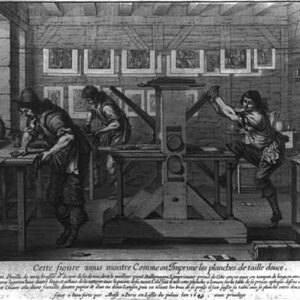
Thomas Short – Connecticut’s First Official Printer
Thomas Short became the Connecticut Colony’s first official printer in 1708, printing the laws and proclamations for the colonial legislature as well as the colony’s first book.
Read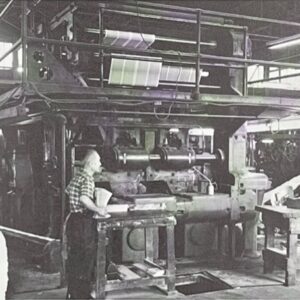
Charlton Publications: Song Lyric Printing Business to Major Player in the Comic Book Industry
By the late 1950s, Charlton Publications was home to some of the most accomplished artists and writers in the comic book industry.
Read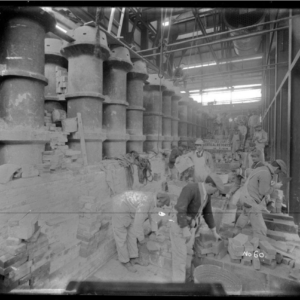
Early Connecticut Gas Light Companies
The first private gas light companies in Connecticut appeared just before 1850 in New Haven, Hartford, and Bridgeport.
Read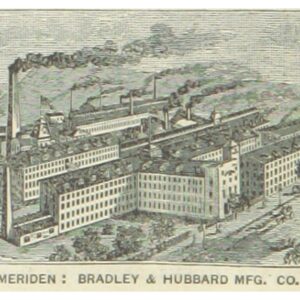
Illuminating Connecticut’s Past: The Bradley & Hubbard Legacy
Meriden’s Bradley & Hubbard Manufacturing Company was an industry-leading American manufacturer of kerosene lamps and metal household items.
Read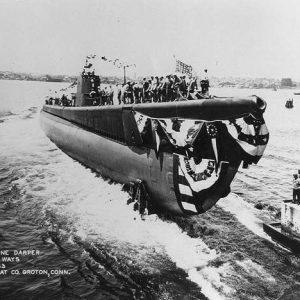
Electric Boat: From Innovation Trials to WWII Submarine Leadership
US submarines accounted for 63 percent of all Japanese ships sunk during WWII—Electric Boat’s vessels were responsible for a significant number of these successful outcomes.
Read
Army-Navy “E” Award Honors Connecticut for Support Against the Axis Powers
During WWII, the US military bestowed 175 Connecticut war plants with the Army-Navy “E” Award for outstanding production contributions to the army and navy.
Read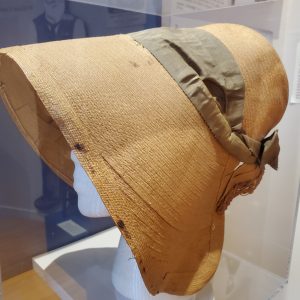
Sophia Woodhouse Welles: Wethersfield’s World-Famous Bonnet Maker
Wethersfield’s Sophia Woodhouse Welles made a name for herself as an inventor and a businesswoman in antebellum America with her bonnets.
Read
Fuller Brush Tower Collapses – Today in History: March 31
On March 31, 1923, a 56,000-gallon water tank dropped through 4 concrete floors of the Fuller Brush Company Tower.
Read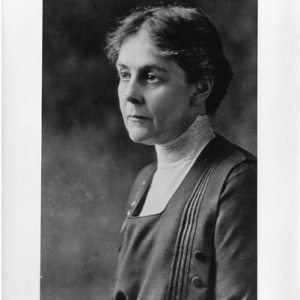
Alice Hamilton: The Nation’s Leading Expert on Industrial Diseases
Dr. Alice Hamilton was a leading authority on industrial diseases and the first female faculty member at Harvard before she retired to Hadlyme, Connecticut.
Read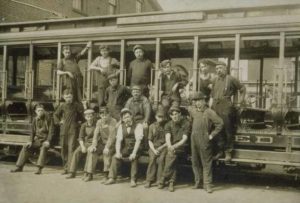
A Revolution in Horse Power: The Hartford & Wethersfield Horse Railroad Goes Electric
In 1888, Hartford commuters and city-goers zipped down Wethersfield Avenue in a horseless trolley car for the first time.
Read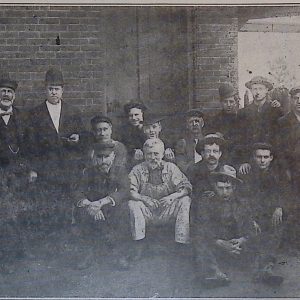
Southington Cutlery Company: From Silverware to Hardware
Initially known for table cutlery, the Southington Cutlery Company began operations in a two-story brick factory in downtown Southington in 1867.
Read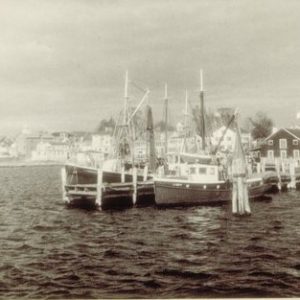
The Sea in their Blood: The Portuguese in New London County
Many Portuguese immigrants came to the US as mariners serving aboard ships, some remained to build new lives and communities in Connecticut.
Read
Bethany: Small-town Perseverance in the Face of Growing Industrialization
One contribution the town of Bethany makes to historical scholarship comes from a look at its evolution from a parish and agricultural settlement to a thriving residential community.
Read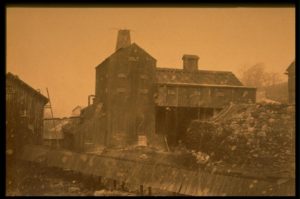
Two Cornwall Firms Part of Famed Salisbury Iron District
As part of what is today called the Salisbury Iron District, Cornwall manufactured iron that was nationally recognized for its quality and durability.
Read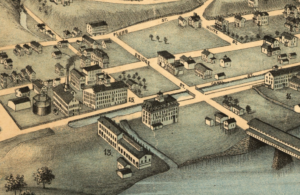
The Derby Silver Company
The Derby Silver Company was founded in 1872 and began operations on Shelton’s Canal Street one year later.
Read
Ebenezer Tracy Made Some of the Finest 18th-Century Furniture
Ebenezer Tracy was a carpenter from Lisbon, Connecticut, who specialized in making fine, hand-crafted furniture.
Read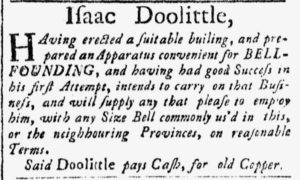
Early Church Bell Founders
Church bells served many important functions in early New England. Consequently, skilled bellfounders in Connecticut found themselves in high demand.
Read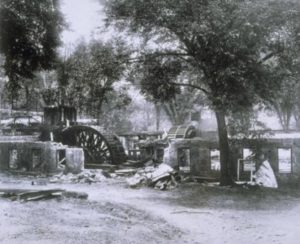
Birth of the Brass Valley
The brass industry in Waterbury began in the mid-18th century and provided an alternative for people struggling to make a living off the rocky, exhausted soil.
Read
The Ives Manufacturing Company: Connecticut’s Foremost Toy Maker
The Ives Manufacturing Company—arguably Connecticut’s most famous toy company—became known for its variety of clockwork toys and trains.
Read
East Haven was Home to Connecticut’s First Iron Works
The roots of Connecticut’s iron industry lie in East Haven, starting in the 17th century.
Read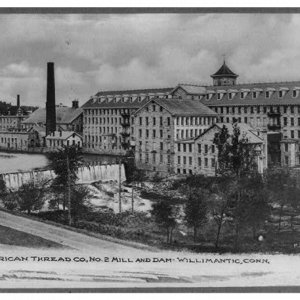
Willimantic’s American Thread Plant–A Multinational Corporate Takeover
American Thread’s arrival in Willimantic in 1899 demonstrates Connecticut’s role in the Progressive Era’s “rise of big business” and “incorporation of America.”
Read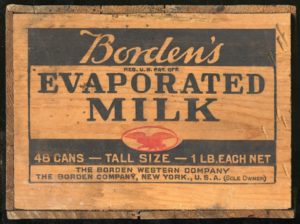
Evaporated Milk’s Connecticut Connection – Who Knew?
In, 1856 businessman Gail Borden Jr. opened the first commercial milk condensery at Wolcottville (now Torrington).
Read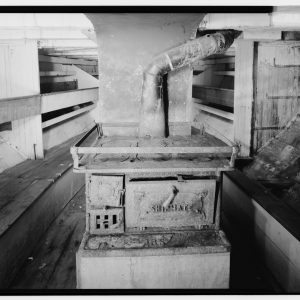
The Stamford Foundry Company Made Notable Stoves
When it ceased operations in the mid-1950s after over 120 years, The Stamford Foundry Company was the oldest known stove works in America.
Read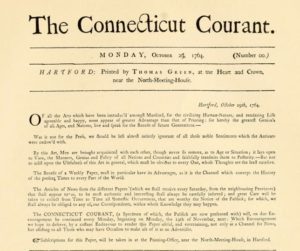
The Oldest Continuously Published Newspaper – Today in History: October 29
On October 29, 1764, New Haven printer Thomas Green established a weekly newspaper, the Connecticut Courant, in Hartford.
Read
Building a Nation Brick by Brick
Brick making was an important industry in Windsor even in its colonial days.
Read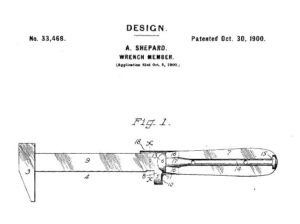
The “Perfect Handle” Hatchet – Who Knew?
In the early 1900s, H.D. Smith and Company of Plantsville began the manufacture of a line of “Perfect Handle” hand tools.
Read
Yankee Ingenuity: Curtis Veeder, a Mechanical Genius and Shrewd Businessman
Curtis Veeder patented a bicycle seat he sold to the Pope Company, and later invented a cyclometer for measuring distances traveled by bicycles.
Read
Hartford’s Industrial Day – Today in History: October 7
Hartford celebrated the 1908 opening of the Bulkeley Bridge, which connected Hartford and East Hartford, with a three-day extravaganza.
Read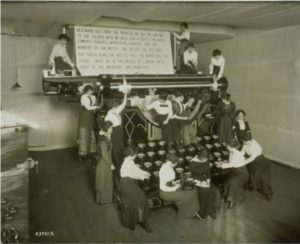
A Different “Type” of Connecticut Industry
In the middle of the 1800s, the invention of the typewriter revolutionized the way Americans communicated, including in Connecticut.
Read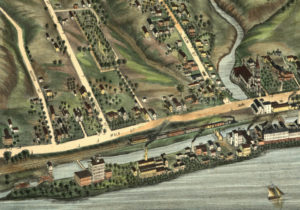
The Windsor Economy: A River Ran Through It
Windsor’s location on the Connecticut River shaped the area’s development dating back to its earliest recorded years.
Read
Connecticut Yankee Brings Power to the People
For nearly 30 years the Connecticut Yankee Atomic Power Company operated a nuclear power plant in Haddam Neck, Connecticut.
Read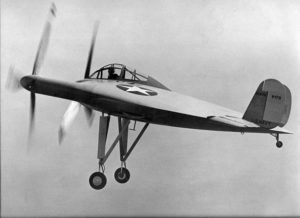
Boone Guyton Tested the Limits of World-Famous Aircraft
A long-time resident of Woodbridge, Boone Guyton was one of the most prolific test pilots in US aviation history.
Read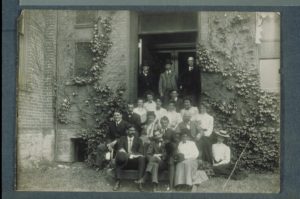
Connecticut Pin Makers
For the latter half of the 19th century and for much of the 20th century, Connecticut led the nation in pin production.
Read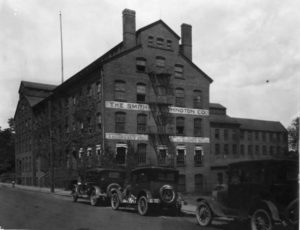
Saddles Fit For a Shah
Since 1794, Hartford-based Smith-Worthington Saddlery has made tack for horses—along with the occasional ostrich harness and space suit prototype.
Read
Elastic Web Expands Textile Manufacturing in West Haven
For the better part of a century, West Haven produced one of the more unique and innovative textile products in United States’ history.
Read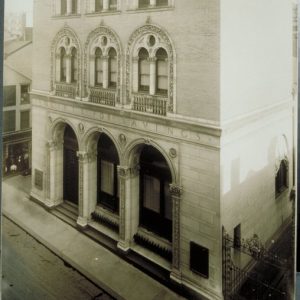
Connecticut’s First Mutual Savings Bank Opens in Hartford
On June 1, 1819, Governor Oliver Wolcott Jr. approved a legislative charter for the Society for Savings in Hartford—the first mutual savings bank in the state.
Read
Elisha Root Changes Industry – Who Knew?
Elisha Root standardized production and made the Colt revolver the first handgun in the world with fully interchangeable parts.
Read
Briggs Manufacturing Drives Voluntown’s 19th-Century Cotton Economy
The Briggs Manufacturing Company was the premier employer in Voluntown, Connecticut, throughout the latter half of the 19th century.
Read
Enfield’s Shaker Legacy
Shaking Quakers settled in Enfield and created the packaged seed business.
Read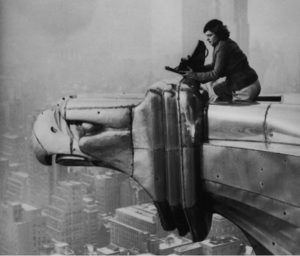
A Metal Giant in Wilton
Kenneth Lynch was an accomplished blacksmith who was a longtime resident of Wilton and created memorable pieces of metalwork found in the Northeast.
Read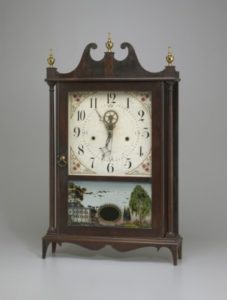
The Life of Chauncey Jerome: An Insider’s Look at What Made Early Bristol Tick
A glimpse at clock making in Connecticut from Chauncey Jerome’s 1860 autobiography
Read
Ashford’s Glass from the Past
In 1857, 13 stockholders invested $18,000 to form the Westford Glass Company—Ashford’s largest and most famous business enterprise.
Read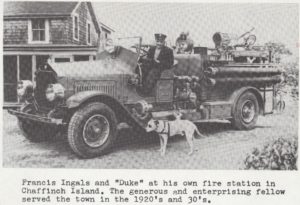
Guilford’s One-Man Fire Department
In the early decades of the 20th century, the town of Guilford had a fire department stationed on Chaffinch Island that consisted of just one man, Francis Ingals.
Read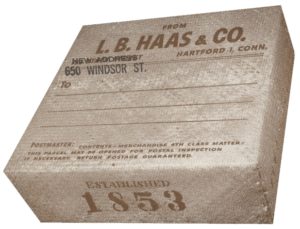
Cash Crop: L.B. Haas & Co. and the History of Tobacco in Connecticut
Louis B. Haas was a Dutch immigrant who opened a retail cigar store, Essman & Haas, on Central Row in Hartford in the late 1840s.
Read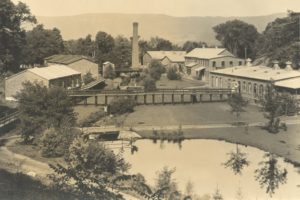
The Steady Evolution of a Connecticut Family Business
Simsbury and Avon’s fuse-making helped build America’s railroads, mine her natural resources, expand the Panama Canal, and even blow up tree stumps in local farm fields.
Read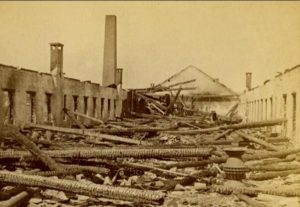
Up from the Ashes: Fire at the Meriden Britannia Company – Today in History: July 16
A manufacturer of silver-plated ware rebounds from the worst fire ever to occur in Meriden.
ReadWeaving the Cultural Fabric of Beacon Falls
The textile mills of the Naugatuck Valley brought tremendous change to towns like Beacon Falls.
Read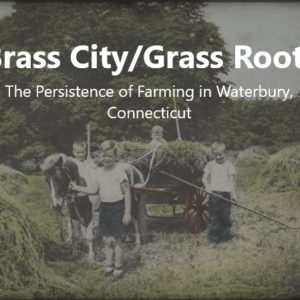
Brass City/Grass Roots: The Persistence of Farming in Waterbury, Connecticut
This article is part of the digital exhibit “Brass City/Grass Roots: The Persistence of Farming in Waterbury, Connecticut”
Read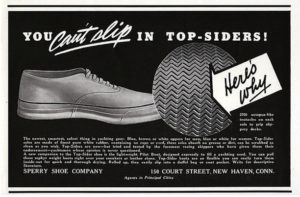
Boat Shoes Have Ties to Connecticut – Who Knew?
During the 1935 winter, Paul Sperry watched his dog run across ice and snow without slipping and got inspired to create a shoe that would help human traction.
Read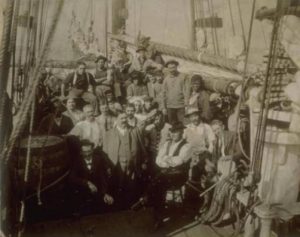
The Rise and Fall of Sealing in Early New London Industry
New London owed much of its early prosperity to the success of its whaling fleet: it was once the third-largest whaling port in the world.
Read
WDRC AM/FM – Connecticut’s Oldest Commercial Radio Station
WDRC is the oldest continuously operated commercial radio station in Connecticut that uses both AM and FM transmissions.
Read
Orange: Connecticut’s Candy Dispenser
Orange, Connecticut is home to one of the most revered, nostalgia-inspiring candy companies in the United States, PEZ.
Read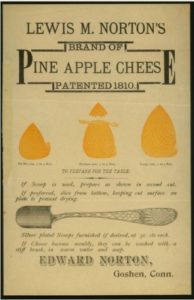
The Story of Pineapple Cheese
On a farm in West Goshen, Lewis Norton made one of the more unusual and popular foods of the 19th century, pineapple cheese.
Read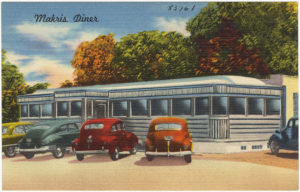
A Hip Road Trip
Known as “Gasoline Alley” during the 1950s, the Berlin Turnpike boasts a heady visual mix of neon, brand names, logos, and 1960s’ motel Modernism.
Read
Albert Augustus Pope, Transportation Pioneer
Pope’s bicycles and automobiles not only gave 19th-century consumers greater personal mobility, they also helped propel social change.
Read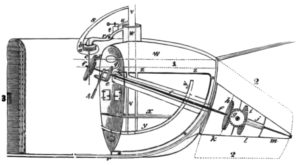
Benjamin Dutton Beecher had a Penchant for Invention
Described by some as “eccentric,” Benjamin Dutton Beecher was a millwright and machinist with a knack for invention.
Read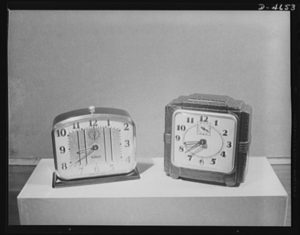
Papier-Mache Clocks – Who Knew?
The William L. Gilbert Clock Corporation of Winsted was one of the few clock-making firms in Connecticut allowed to continue the manufacture of clocks during World War II.
Read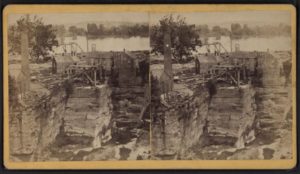
Portland Puts Its Stamp on an Architectural Era
The brownstone quarries in Portland, Connecticut, owe their existence to millions of years of prehistoric sediments accumulating in the Connecticut River.
Read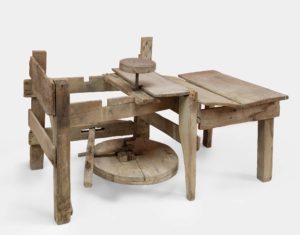
Hervey Brooks’s 19th-Century Pottery Barn
Hervey Brooks was an American potter and farmer who made red earthenware domestic products in Goshen for more than half a century.
Read
The Incident of the Stonington Schooner ‘Breakwater’: A View from Indian Country
Hundreds of American Indians served as mariners, including on the Stonington schooner ‘Breakwater,’ which survived capture in the Falkland Islands.
Read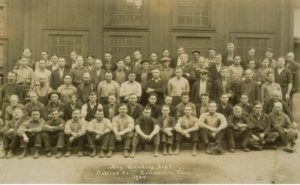
World-renowned Maker of Axes: The Collins Company of Canton
The New England factory town of Collinsville, which can still be toured today, once supplied the world with axes, machetes, and other edge tools.
Read
The Pike Family Lived a Life of Dyeing
The Pike family of Sterling, Connecticut worked in textile dying for four generations.
Read
Shakers Revolutionize Garden Seed Business – Who Knew?
Enfield Shaker-grown garden seeds, one of their best and most successful endeavors, were sold throughout the US in small packages.
Read
Vivien Kellems Takes On the IRS
Reformer Vivien Kellems fought her most famous battle against the Internal Revenue Service (IRS) as she sought tax reform for businesses and single people.
Read
Humble Beginnings of the Dow Jones: How a Sterling Farmer Became the Toast of Wall Street
The life of Charles Dow, in many respects, follows the storyline of the prototypical self-made man.
Read
Mad about Shad: Connecticut’s Love Affair with an Oily Fish
Some Connecticut River towns continue to hold an annual shad festival, replete with a “Shad Queen” and a feast known as a “shad planking.”
Read
Mounds Candy Bar Involved in Espionage – Who Knew?
A storied Naugatuck business had its own “navy” and that it performed espionage services for the United States government during World War II.
Read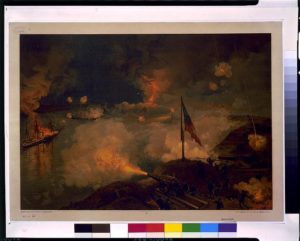
Connecticut’s Naval Contributions to the Civil War
Companies across Connecticut helped keep the Union navy afloat while sea-savvy leaders and sailors from the state kept it in fighting form.
Read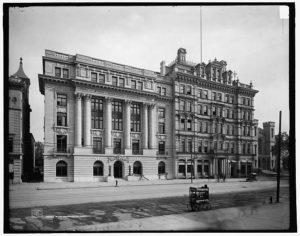
Aetna Helps Make Hartford “The Insurance Capital of the World”
Aetna started out as fire insurance company in Hartford in 1819, but spread into life insurance and is now a global leader in the health insurance industry.
Read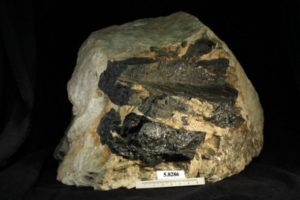
The Industrial Might of Connecticut Pegmatite
Connecticut has a complex and compelling geologic legacy with substantial mineral riches, including pegmatite that has historically been a boon to industry.
Read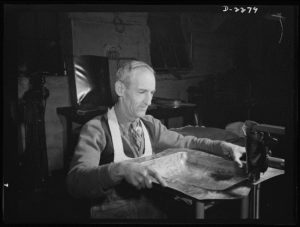
Early 20th-Century Immigration in Connecticut
Connecticut played host to new, vast populations of Italian, Polish, and French Canadian immigrants who helped reinvent the state’s cultural identity.
Read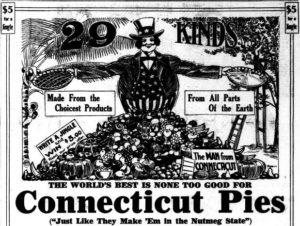
The Pie Man from Georgetown and the Connecticut ~ Copperthite Pie Company
More than just a wagon driver and Civil War veteran, Henry Copperthite built a pie empire that started in Connecticut.
Read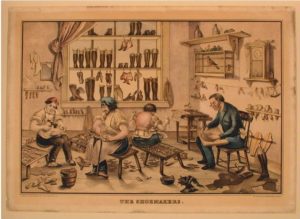
The Sole of New Canaan’s Shoe Industry
New Canaan, now largely a residential suburb of New York City, was once a leading producer of US footwear.
Read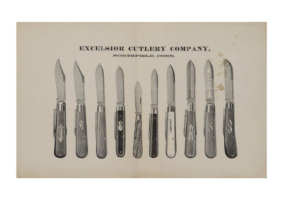
Connecticut Pocketknife Firms
Connecticut pocketknife production began around 1840. Over the next two decades, Connecticut became the earliest state to have a burgeoning craft.
Read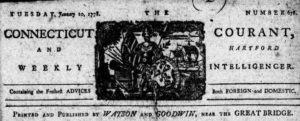
Hannah Bunce Watson: One of America’s First Female Publishers
Hannah Bunce Watson was one of the first female publishers in America and helped the Hartford Courant survive one of the most challenging times in its history.
Read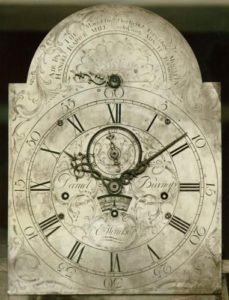
Marking Time: Early Connecticut Innovations Transform Clock Making
During the 18th and 19th centuries, Connecticut played a major role in transforming clock making from a time-intensive handcraft into a mass-production industry.
Read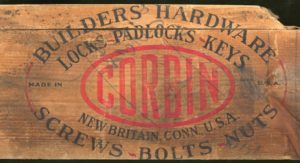
The Corbin Cabinet Lock Company and Patent Law: A Lesson in Novelty from a CT Perspective
New Britain, fondly known as the “Hardware City,” had numerous companies that contributed to modern industrialization.
Read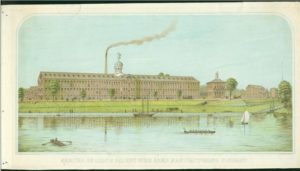
Samuel Colt: From Yankee Peddler to American Tycoon
Hartford native Samuel Colt built a financial empire on his design and automated production of the revolver.
Read
The Cheney Brothers’ Rise in the Silk Industry
Building a business on the back of an insect may seem foolish but for Manchester’s Cheney Brothers silk mill, it became the ticket to global success.
Read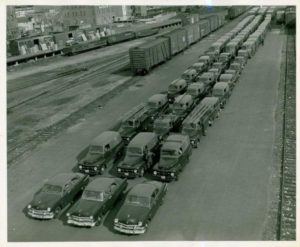
G. Fox and the Golden Age of Department Stores
Founded by Gerson Fox in 1848, G. Fox & Co. went on to become the nation’s largest privately owned department store.
Read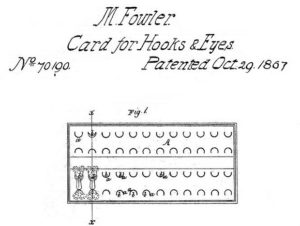
Family Ties Bring Together North Branford Industry
In 1830, a resourceful industrialist opened a button making shop in what today is the Northford section of North Branford.
Read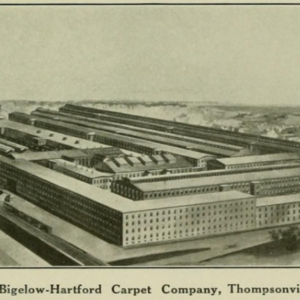
First Connecticut Carpet Mills Emerge in Simsbury and Enfield
In the 1820s, the first two notable carpetmakers emerged in the north central part of Connecticut—the Tariff Manufacturing Company and the Thompsonville Carpet Manufacturing Company.
Read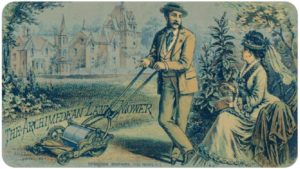
Selling Connecticut Products Abroad
In the mid-1800s, manufacturers from Connecticut found new overseas markets for everything from clocks and firearms to lawn mowers and machetes.
Read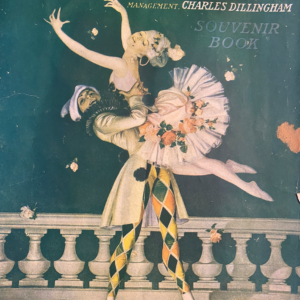
Hartford’s Charles Dillingham Discovered Broadway Stars
After growing up in Hartford, Charles Dillingham explored numerous career paths including newspaper publishing, politics, and—most famously—theatrical managing and producing.
Read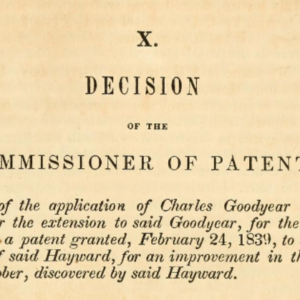
Rubber Vulcanization and the Myth of Nathaniel Hayward
Colchester has a persistent myth that Hayward invented vulcanization—a process that helps make rubber useful for manufacturing—but did not receive the credit he deserved.
Read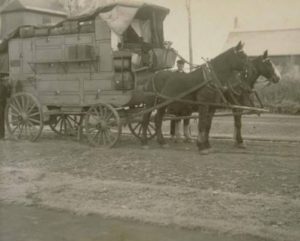
New Britain’s Yankee Peddlers Boost 18th-century Economy
While the rural economy of the North in the 18th century focused on local exchanges of goods within a community, Yankee peddlers used their mobility to bring finished products directly to the consumer.
Read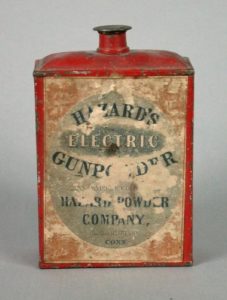
Colonel Augustus G. Hazard, Gunpowder Manufacturer – Who Knew?
By 1843, Augustus Hazard and partner Allan Denslow formed a joint stock venture called the Hazard Powder Company.
Read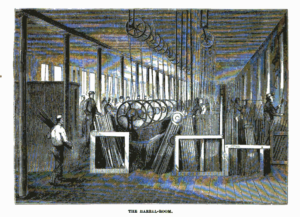
Norwich’s “Volcanic” Past
With its water power, its location, and proximity to major port cities, Norwich has been attracting gun manufacturers since the American Revolution.
Read
William Hawkins Abbott Finds the Energy to Power the Northeast
William Hawkins Abbott helped transform the market for affordable energy through his oil refining, pipeline, and distribution networks.
Read
The Early Years of the Pratt & Whitney Aircraft Company
Wasp and Hornet engines secure the reputation and success of this 1920s start-up venture.
Read
Farmington Canal Designed to Give Connecticut Commerce a Competitive Edge
The Farmington Canal serves as an example of how developments in transportation played a pivotal role in facilitating the country’s industrial activity.
Read
Phillips’ Milk of Magnesia Originated in Stamford
In 1873, Charles H. Phillips patented Milk of Magnesia and his company produced the popular antacid and laxative in Stamford, Connecticut, until 1976.
Read
Beechmont Dairy: Bridgeport’s Ice Cream to Die For
Joseph Niedermeier Sr. founded the Beechmont Dairy in Bridgeport in 1906—a popular local business for over 60 years.
Read
Cromwell’s Iron Men Made Toys for Boys and Girls
The J & E Stevens Company eventually became the largest manufacturer of cast-iron toys in the country.
Read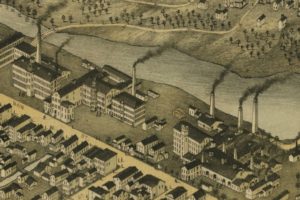
The American Brass Company: Leading the Way in the “Brass Valley”
The American Brass Company helped make the Naugatuck Valley a center of international brass production until the late 20th century.
Read
Scrabble Copyrighted – Today in History: December 1
On December 1, 1948, James Brunot of Newtown copyrighted the famous spelling game Scrabble.
Read
The First University of Connecticut Trustees
When the University of Connecticut started life as the Storrs Agricultural School in 1881, Governor Hobart Bigelow appointed its first eight trustees—all with agricultural backgrounds.
Read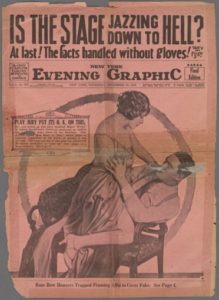
Emile Gauvreau and the Era of Tabloid Journalism
Emile Gauvreau, former managing editor of the Hartford Courant, became a pioneer in the rise of tabloid journalism.
Read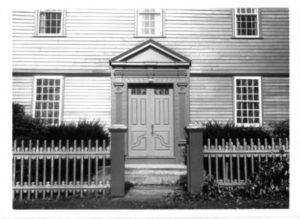
Daniel Curtiss: The Life of a 19th-Century Self-Made Man
Daniel Curtiss spent most of his life in Woodbury, thriving in business, pioneering the sale and distribution of commercial goods, and serving his town by holding political office.
Read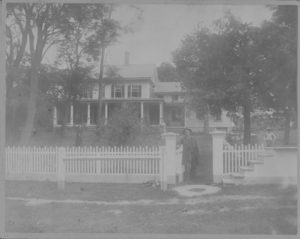
The Land of Nod Farm, East Canaan, Connecticut
The Land of Nod farm was an important agricultural and residential resource for both the people of East Canaan and the workers at the Beckley furnace.
Read
New Haven’s Long Wharf
From the 17th through the 19th centuries, the economic prosperity of New Haven significantly depended upon Long Wharf.
Read
Late 19th-Century Immigration in Connecticut
Immigration to Connecticut in the second half of the 19th century proceeded much as it had in earlier decades.
Read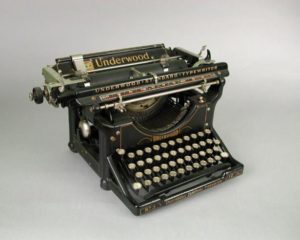
Typing History
Home to companies such as Royal and Underwood, Connecticut became an important manufacturing center for typewriters in the early 20th century.
Read
Mighty, Mighty Hartford
In October of 1908, Hartford celebrated the opening of the Bulkeley Bridge, which connected Hartford and East Hartford, with a three-day extravaganza.
Read
The Whitney Armory Helps Progress in Hamden
Eli Whitney later established an armory in Hamden that not only produced weapons for the US government during the early 19th century but also contributed to the evolution of mass-produced firearms.
Read
BF Clyde and the Steam-powered Cider Mill – Who Knew?
In 1881, Connecticut resident Benjamin F. Clyde began producing and selling cider in Mystic.
Read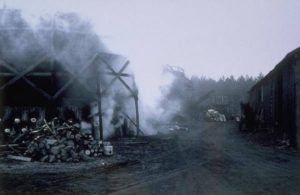
1938 Hurricane Fuels Charcoal Business – Who Knew?
The hurricane of 1938, which devastated the Quinebaug Forest, ended up driving the development of the charcoal industry in Union.
Read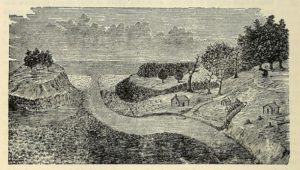
Putting Cleveland on the Map: Lorenzo Carter on the Ohio Frontier
From Connecticut, Lorenzo Carter became the first permanent settler of the community that became Cleveland, Ohio.
Read
Wheeler & Wilson: A Stitchy Situation in Watertown
The Watertown firm of Wheeler & Wilson Manufacturing produced one of the most successful products of the late 19th century.
Read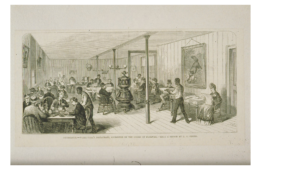
Serving Up Justice: Hartford’s Black Workers Organize
The earliest labor union for African American workers in Hartford appeared in 1902 with the birth of the Colored Waiters and Cooks Local 359.
Read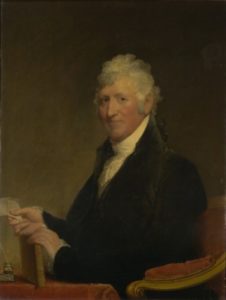
David Humphreys, Soldier, Statesman, and Agricultural Innovator
Despite an accomplished political career, this Derby-born gentleman of means is best remembered for introducing Merino sheep to North America.
Read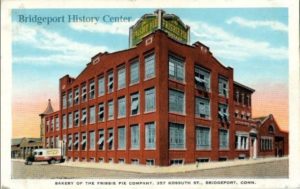
A Pie Tin’s Soaring Sales
Tins used to hold pies at William Frisbie’s pie company in Bridgeport in the late 1800s reportedly provided the inspiration for Wham-O’s most popular toy, the Frisbee.
Read
Andover’s Award-Winning Creamery
Started in 1886 by town residents, the Andover Creamery Corporation typified cooperative agricultural enterprises of the late 19th and early 20th centuries.
Read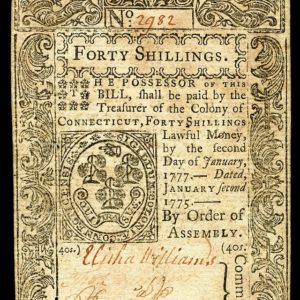
Connecticut’s Early Commercial Banks
After observing the financial success of commercial banks in Boston and New York City, wealthy elites in Connecticut pressured the Connecticut General Assembly to grant charters for privately owned commercial banks in Hartford, New Haven, and New London in 1792.
Read
Orange Seeds Yield Corn, Alfafa, Soy, and More
The antecedents of many of today’s most widely utilized crop seeds can trace their lineage back to a company started by the Clark family in Orange, Connecticut.
Read
The Danbury Hatters
References to the hat making industry abound in Danbury and continue to shape much of the city’s identity today.
Read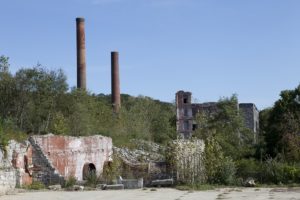
A Baltic Mill Helps Found a New Town
The Baltic Mill was once the largest cotton mill in the United States and led to the founding of the town of Sprague.
Read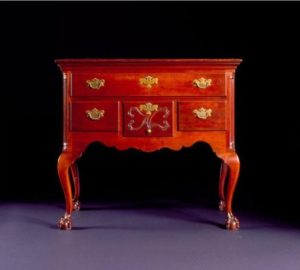
Connecticut Valley Style: Eliphalet Chapin Inspires a Tradition of Craft
Favoring local cherry and pine woods, this furniture maker introduced Philadelphia-style flair to New England consumers.
Read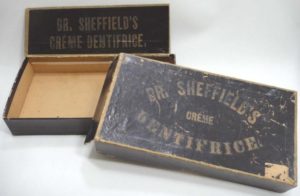
Aristocratic Dental Cream Gets Squeezed
Taking advantage of his skills as a dentist and chemist, Dr. Washington Wentworth Sheffield, in 1850 at the age of 23, invented modern toothpaste.
Read
Brass City/Grass Roots: From Farmers to Developers: The Rasmussens of Town Plot
This article is part of the digital exhibit “Brass City/Grass Roots: The Persistence of Farming in Waterbury, Connecticut”
Read
Brass City/Grass Roots: The Pierponts of East Farms
This article is part of the digital exhibit “Brass City/Grass Roots: The Persistence of Farming in Waterbury, Connecticut”
Read
Brass City/Grass Roots: Remnants and Revivals
This article is part of the digital exhibit “Brass City/Grass Roots: The Persistence of Farming in Waterbury, Connecticut”
Read
Brass City/Grass Roots: Bucks Hill: Waterbury’s Rural Holdout
This article is part of the digital exhibit “Brass City/Grass Roots: The Persistence of Farming in Waterbury, Connecticut”
Read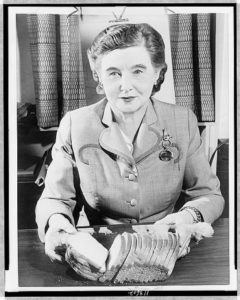
Pepperidge Farm Opens Bakery – Today in History: July 4
On July 4, 1947, Margaret Rudkin of Fairfield opened a modern commercial bakery in Norwalk and gave it the name of her small bakery, Pepperidge Farm.
Read
Bigelow Tea–A Connecticut Tea Party
The Bigelow Tea Company was started as a small family business in Manhatten before moving to Norwalk and then Fairfield.
Read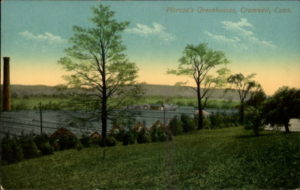
The Rose King of America Transformed Cromwell’s Landscape
Andrew N. Pierson established A.N. Pierson’s, Inc., a small floral nursery in Cromwell that evolved into the largest commercial rose growing enterprise in the country.
Read
J. P. Morgan’s Connecticut Roots
One of the great financiers of the late 19th and early 20th century, J. P. Morgan was born (and spent much of his youth) in Hartford, Connecticut.
Read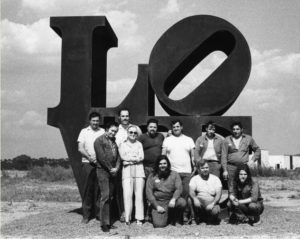
North Haven: Fabricating Sculpture in the 1960s and 1970s
Lippincott, Inc., in North Haven, was one of the most highly respected fine-arts metal fabricators in the country in the second half of the 20th century.
Read
Summer Crowds Flocked to New Canaan and Stayed
Like many towns in Connecticut, New Canaan owes much of its modern character to the evolution of industry and transportation in the Northeast.
Read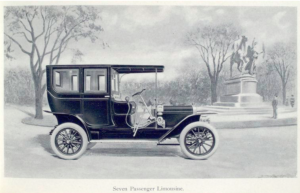
The Hardware City Could’ve Been the Motor City – Who Knew?
In 1903 the Russell & Erwin Company and the American Hardware Corporation purchased the Bristol Motor Car Company of Bristol, Connecticut.
Read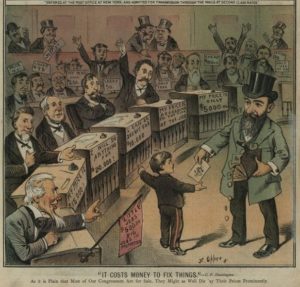
Collis P. Huntington: The Boy from Poverty Hollow
From a poverty-stricken life in Harwinton, Connecticut, Collis Huntington grew to be one of the wealthiest and most powerful railroad men of his era.
Read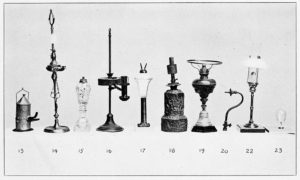
Connecticut Domestic Oil Lamp Makers
In a time before gas lamps and incandescent bulbs were more widely embraced, Connecticut firms made oil lamps using various fuels, burners, and different materials.
Read
Built on Innovation, Saved by Nostalgia: Hitchcock Chair Company
In the 1820s Lambert Hitchcock adapted mass production concepts pioneered in the clock-making field to chair manufacture.
Read
The Inventive Minds of Connecticut Women: Patents in the 19th Century
Between 1790 and 1930, Connecticut residents were issued the most patents in the US per capita, many of them inventions by women.
Read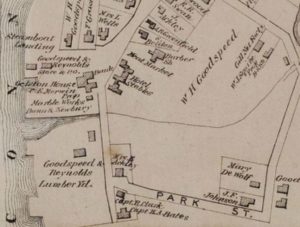
W. J. Squire’s Gill Net Manufactory in East Haddam
In the early 1870s, Wilbur J. Squire (1837-1890) built his factory for the manufacture of gill nets in East Haddam.
Read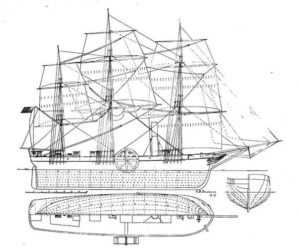
Steaming Across the Atlantic
New London’s advantageous location on Long Island Sound made it a center for innovation in the transportation of goods and services by sea.
Read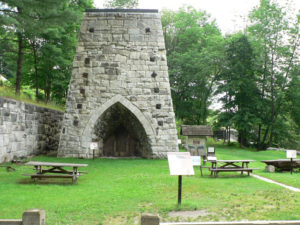
The Beckley Blast Furnace, East Canaan
The Beckley Blast Furnace, also known as East Canaan #2, is located in northwest corner of Connecticut on the Blackberry River.
Read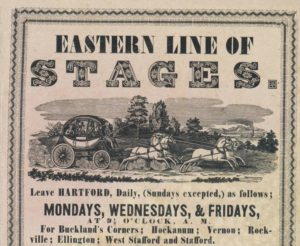
Stagecoach Sustained Commerce and Communication in 1800s
In its early 19th-century heyday, stagecoach travel was a large-scale enterprise and a source of livelihood for many state residents.
Read
Jeremiah Wadsworth, “foremost in every enterprise”
Jeremiah Wadsworth was a sea-going merchant, commissary general to the Continental army, and founder of the nation’s first banks.
Read
Child Labor in Connecticut
While Connecticut proved to be one of the more progressive states when it came to child labor laws, it still took federal legislation to protect children in the workplace.
Read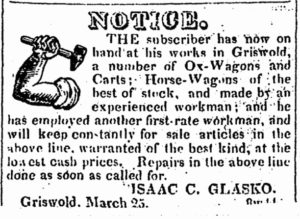
Blacksmith Isaac Glasko Challenges the State Constitution
Isaac Glasko was a blacksmith of mixed African American and Native American descent who challenged 19th-century voting rights in Connecticut.
Read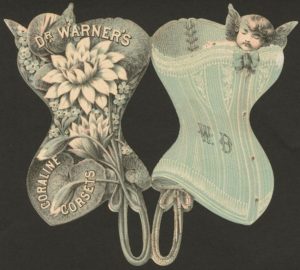
From Bombs to Bras: World War I Conservation Measures Transform the Lives of Women
A shortage of metal during World War I encouraged women’s clothing manufacturers (such as Bridgeport’s Warner Brothers Corset Company) to switch from producing corsets to brassieres.
Read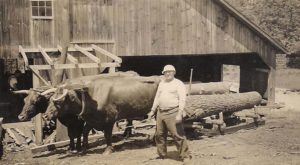
Chamberlin Mill: A Woodstock Survivor
West Woodstock’s Chamberlin Mill is a rare example of a water-powered circular saw mill converted to gasoline power.
Read
The Wearing of the Green: 19th-century Prints of Irish Subjects by Hartford’s Kellogg Brothers
Irish immigrants arrived in Connecticut in great numbers during the 1800s and, while anti-Irish sentiment was widespread, Hartford’s Kellogg brothers viewed these new Americans as potential customers.
Read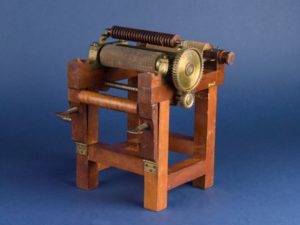
Charles Goodyear’s Machine for Making Rubber Fabrics
Credited with discovering the vulcanization process that fortified rubber against extreme temperature changes, Charles Goodyear received several patents over his lifetime.
Read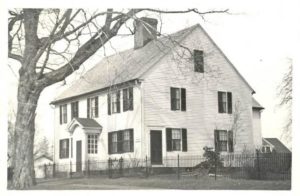
A Pioneering Woman in Business: Martha Parsons of Enfield
Enfield’s Martha Parsons broke new ground in her pursuit of employment opportunities for women. Her family home now belongs to the Enfield Historical Society.
Read
The Gildersleeve Shipbuilding Legacy in Portland
Perhaps the most recognizable name in the history of Portland, Connecticut shipbuilding is Sylvester Gildersleeve.
Read
Rockwell Hardness Tester – Today in History: February 11
In 1919, Hugh Rockwell and Stanley Rockwell received a patent for the Rockwell hardness tester, one of the 20th century’s metallurgical innovations.
Read
Laboring in the Shade
Thousands of Black Southern students, including a young Martin Luther King Jr., came north to work in Connecticut’s tobacco fields.
Read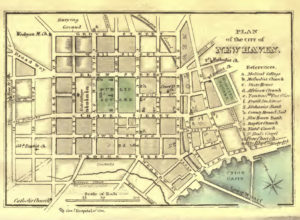
The Successes and Struggles of New Haven Entrepreneur William Lanson
The life of this savvy businessman illustrates the possibilities—and limits—urban Connecticut presented to African Americans in the early 1800s.
Read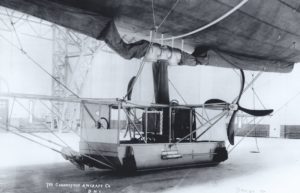
DN-1: The US Navy’s First Airship
The United States military’s experience with lighter-than-air technology began with the Connecticut Aircraft Company’s DN-1 airship built for the navy in 1917.
Read
One-Legged Stools – Who Knew?
Hazard Powder Company employees sat on one-legged stools to keep them from falling asleep while working with dangerous materials.
Read
G. Fox & Co. Destroyed by Fire – Today in History: January 29
On January 29, 1917, watchmen discovered a fire on the ground floor of the G. Fox & Co. building complex located on Main Street in Hartford.
Read
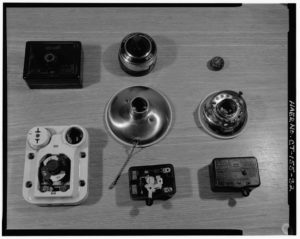
The Rise and Fall of Manufacturing in Bridgeport: The Case of Bryant Electric
For one hundred years Bryant Electric was a staple of Bridgeport industry, adapting to the challenges of the changing industrial landscape in America.
Read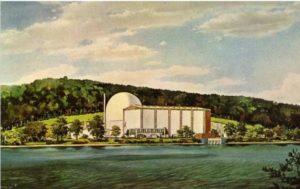
Connecticut Yankee and Millstone: 48 Years of Nuclear Power
In 1968 the prospect of nuclear power energized those hoping to find an alternative to coal, oil, and other fossil fuels.
Read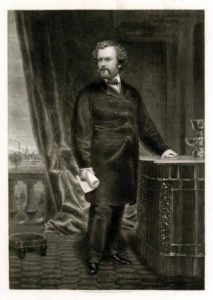
Sam Colt’s Funeral: The Day Hartford Stopped
The funeral of America’s first great munitions maker was spectacular—certainly the most spectacular ever seen in the state’s capital city.
Read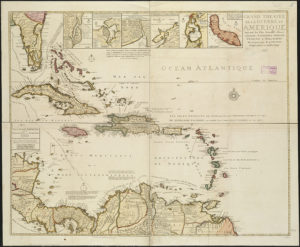
Connecticut and the West Indies: Sugar Spurs Trans-Atlantic Trade
This profitable exchange brought wealth and sought-after goods to the state but came at the price of supporting slavery in the bargain.
Read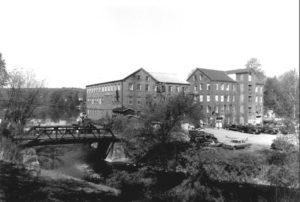
Buckling Up For Auto Safety
Connecticut joined several other states and the District of Columbia mandating seat belt usage for children and adults in automobiles in 1985.
Read
Pratt & Whitney Debuts Wasp Engine – Today in History: December 24
On December 24, 1925, aviation engineer and head of the Pratt & Whitney Aircraft Company Frederick B. Rentschler debuted its first product: the Wasp engine.
Read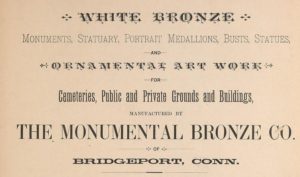
Monumental Bronze Company
The Monumental Bronze Company of Bridgeport was the only producer of a unique type of grave marker in the United States between 1874 and 1914.
Read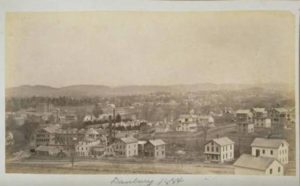
Ending the Danbury Shakes: A Story of Workers’ Rights and Corporate Responsibility
Despite the known dangers of prolonged exposure to mercury, the hat-making industry was slow to safeguard workers against its toxic effects.
Read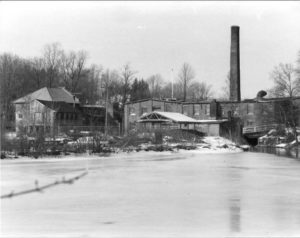
Bevin Brothers Helps Transform East Hampton into Belltown, USA
Home to 30 different bell manufacturers, the town of East Hampton is informally known as “Belltown, USA.”
Read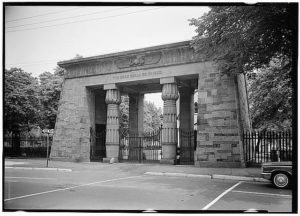
Father of Architects Born – Today in History: December 4
On December 4, 1804, “Father of Architects” Henry Austin was born in the Mt. Carmel section of Hamden, Connecticut.
Read
Mr. & Mrs. Rockwell’s Park
In 1914, bell and ball bearing manufacturer Albert Rockwell donated 80 acres of land to the city of Bristol for the creation of a public park.
Read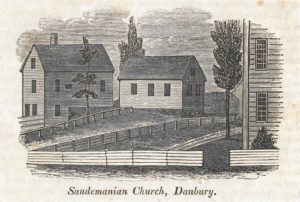
The Sandemanians
The Sandemanians of Danbury were a semi-communal sect whose local influence outweighed its tiny numbers.
Read
Beatrice Fox Auerbach: Retail Pioneer Led Iconic Family Department Store
Beatrice Fox Auerbach was pioneering retail executive who ran the G. Fox & Co. department store and numerous philanthropic benefiting people in Hartford and around the world.
Read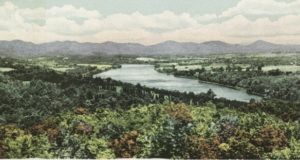
The Connecticut Valley Authority That Never Was
In the early 20th century, supporters of the New Deal tried to recreate the Tennessee Valley Authority in the Connecticut River Valley.
Read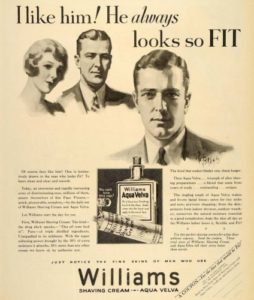
The Aqua Velva State – Today in History: November 17
On November 17, 1917, the J.B. Williams Company of Glastonbury filed a trademark with the US Patent and Trademark Office for the Word Mark “Aqua Velva.”
Read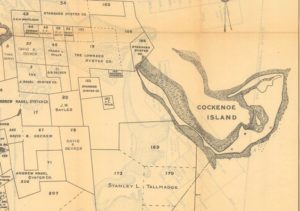
The Battle for Cockenoe Island
In 1967, the United Illuminating Company proposed to build a nuclear power plant on Cockenoe Island off the coast of Westport, but grassroots activism ultimately scuttled that plan.
Read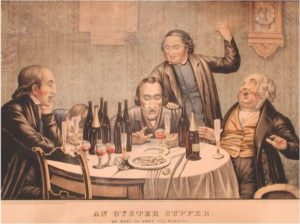
Any Month with an “R” in It: Eating Oysters in Connecticut
Lack of refrigeration and higher bacteria counts in tidal waters once made summer months a dangerous time to eat oysters.
Read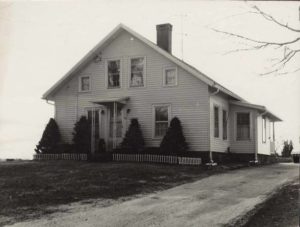
Seth Thomas Works Around the Clock in Wolcott
Seth Thomas was a Connecticut native who became a pioneer in the mass production of high-quality wooden clocks.
Read
New Haven: What Was Everyday Life Like During the Civil War?
A great primary resource for digging into a community’s everyday life is a city directory.
ReadBeacon Falls Rubber Shoe Company Puts Best Foot Forward
Father and son George and Tracy Lewis not only founded a business together, they also had a hand in more than doubling the population of Beacon Falls.
Read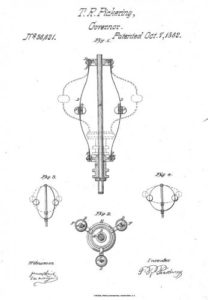
Portland Improves the Steam Engine
Thomas R. Pickering, an engineer, ran a factory power plant in the mid-1800s and made improvements.
Read
Avon Industry: From Underground to Outerspace
The origins of the Climax Fuse Company date back to 1852 in Avon, Connecticut.
Read
The Wallingford Oneida Community
In the late 1800s, Wallingford was home to a small branch of the Oneida Community.
Read
Connecticut’s Mulberry Craze
Connecticut, especially Windham and Tolland Counties, was the epicenter of US raw-silk production in the mid-19th century.
Read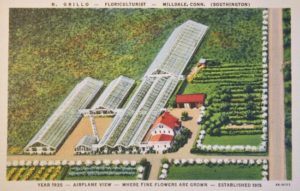
Nicholas Grillo and his Thornless Rose
Nicholas Grillo was a self-made floriculturist who earned international acclaim for developing the world’s first thornless hybrid tea rose.
Read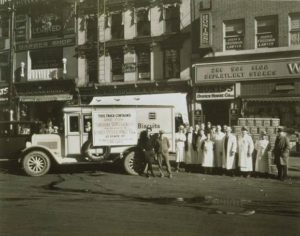
Oystering in Connecticut, from Colonial Times to the 21st Century
Why tasty Crassostrea virginica deserves its honored title as state shellfish.
Read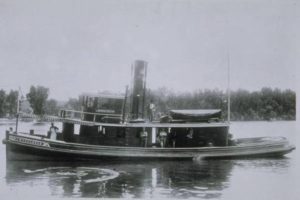
The Great River: Connecticut’s Main Stream
Highway. Barrier. Resource. Sewer. Over the centuries each of these names has been used to describe one of the defining feature’s of the state’s landscape.
Read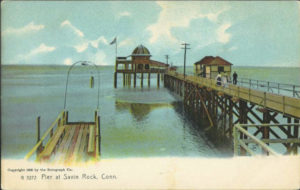
Savin Rock Park: “Connecticut’s Coney Island”
Savin Rock Park was a seaside resort constructed in the late 19th century in the modern-day town of West Haven.
Read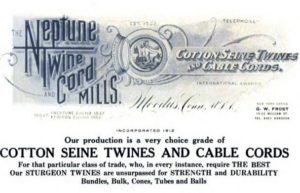
Intertwining Family Businesses
Emory Johnson, a farmer from Chatham, Connecticut, moved to East Haddam and operated one of the area’s most successful businesses of the late 19th century.
Read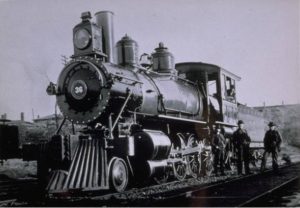
Steam Railroads Transform Connecticut Travel and Commerce
In 1832, the state chartered its first railroad and ushered in a new age of fast, and sometimes dangerous, regional transportation.
Read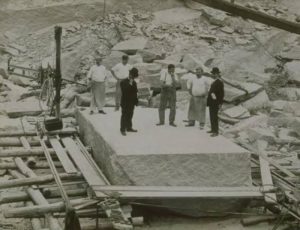
Branford’s History Is Set in Stone
Recognized for its superior quality, the polished rock that came out of Branford traveled by schooner or rail to points as far as Chicago and New Orleans.
Read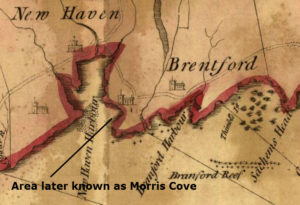
East Haven’s Revolutionary Salt Works
East Haven’s Amos Morris helped supply Americans with salt (essential for preserving food) during critical shortages brought on by the American Revolution.
Read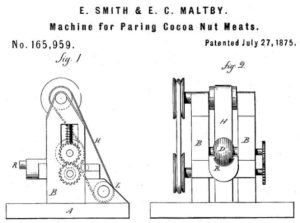
North Branford Vied for the Title of “Shredded Coconut Capital of the World” – Who Knew?
Patents granted to North Branford residents included one for a device used for paring coconut meats in 1875.
Read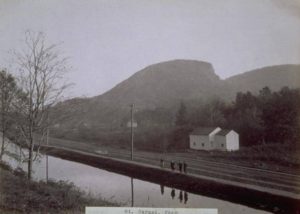
New England’s Grand Ambition: The Farmington Canal
Connecticut took leading role in waterway that transformed the region’s commerce.
Read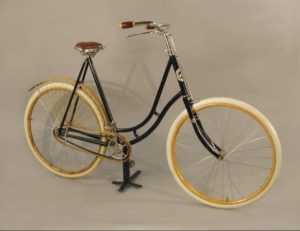
A Revolution On Two Wheels: Columbia Bicycles
Albert Pope’s company not only played a prominent role in developing improved bicycle designs, it also developed the market for them.
Read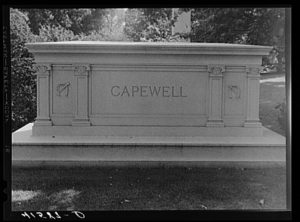
Horseshoe Nail Capital of the World – Who Knew?
In the late 19th century, George Capewell formed the Capewell Horse Nail Company, which mass produced horseshoe nails.
Read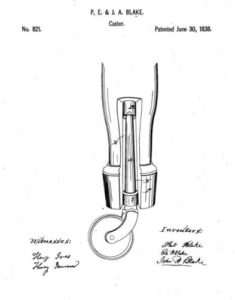
Furniture Caster Patented – Today in History: June 30
On June 30, 1838, the US patent No. 821—the first for a furniture caster—was granted to the Blake Brothers of New Haven.
Read
Instruction by Mail: The Famous Artists School
The Famous Artists School in Westport once provided the premier correspondence training for those interested in an art career.
Read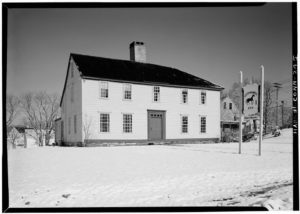
Christopher Leffingwell Born – Today in History: June 11
On June 11, 1734, businessman and civic leader Christopher Leffingwell was born in Norwich.
Read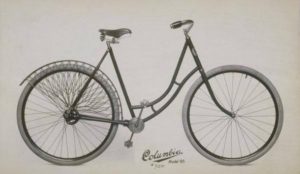
Albert Pope Pioneered Bicycles for Women
Hartford-based inventor Albert Pope saw his first bicycle at the 1876 Centennial Exposition in Philadelphia and was so impressed that he went to Europe to study how bicycles were made.
Read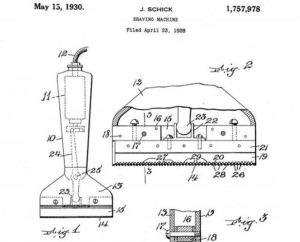
Jacob Schick Invents the Electric Razor – Today in History: May 13
On May 13, 1930, Colonel Jacob Schick obtained patent No. 1,757,978 for his dry electric shaver.
Read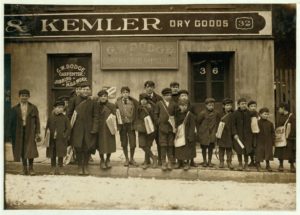
The Newsies Strike Back
Despite organizing in 1909 to fight pay cuts, ultimately, vending machines and changing business models brought an end to the era of the Hartford newsie.
Read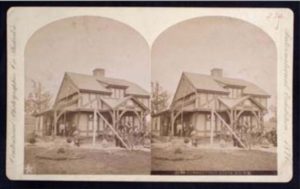
Take Me to the Fair: Connecticut Exhibits at the International Expositions
Connecticut took part in many of the great World’s Fairs, especially those held in North America.
Read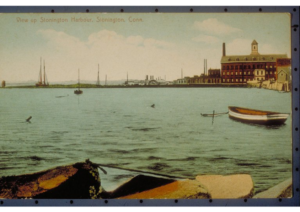
Borough of Stonington
Settled in 1752, Stonington became a fishing, shipbuilding, whaling, and sealing center and survived attacks during both the Revolutionary War and the War of 1812.
Read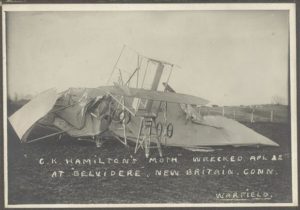
Hamilton Wrecks Aeroplane – Today in History: April 22
On April 22, 1911, aviation pioneer Charles Hamilton crashed his brand new, all white, biplane the “Moth” at Andrews Field in New Britain.
Read
The Coaster Brake – Today in History: April 9
On April 9, 1907, Harry Pond Townsend patented the driving and braking mechanism for cycles, the first device to combine driving, braking, and coasting.
Read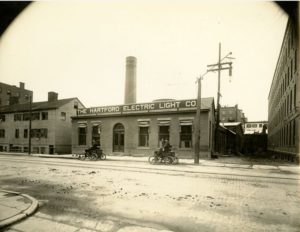
Let There Be Light: An Early History of the Hartford Electric Light Company
As cities switched from gas lamps to electric lighting, one observer noted that Hartford was “far in the lead of any other city in the world in the use of electricity for light and power per capita.”
Read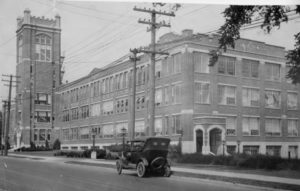
Hartford’s Fuller Brush Company Goes Door-to-Door Across US
Founded in 1906 by Alfred C. Fuller, the Fuller Brush Company was one of Connecticut’s most notable corporations.
Read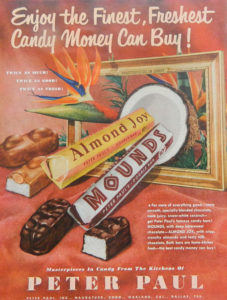
A Candy Bar Empire in Naugatuck
Almond Joy and Mounds were two of the most popular candy bars sold by Naugatuck’s Peter Paul Manufacturing Company, an enterprise begun by Armenian immigrant Peter Halajian.
Read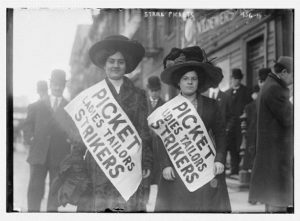
Triangle Shirtwaist Fire: Connecticut Lessons from a Tragedy
While the Triangle Shirtwaist fire in New York City is one of the most famous tragedies behind the organized labor movement, Connecticut had its share of equally dangerous work environments in the early 20th century.
Read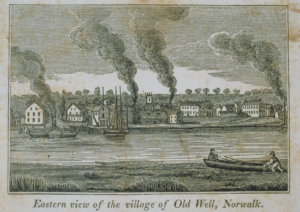
Connecticut’s First Municipal Electric Utility
The first municipal electric plant in Connecticut began operating in the City of South Norwalk in 1892 to provide low-cost electricity.
Read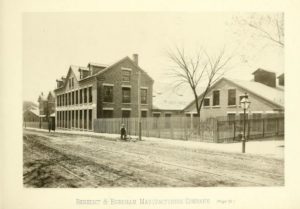
Early 19th-Century Immigration in Connecticut
Numerous factors contributed to the growth of Connecticut in the decades following American independence.
Read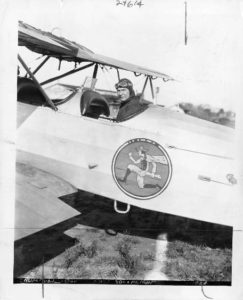
John H. Trumbull: Connecticut’s “Flying Governor”
In 1926, at the age of 53, Connecticut governor John H. Trumbull received his pilot’s license. Piloting flights to his own appointments, he became known as “The Flying Governor.”
Read
Today in History – Fales & Gray Explosion Underscores Need for a Hartford Hospital
At 2 pm on March 2, 1854, the power of steam incorrectly managed and harnessed wreaked havoc at the railroad-car factory Fales & Gray Car Works in Hartford.
Read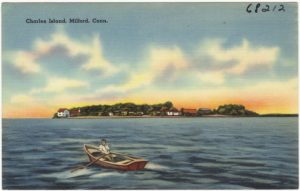
A Good Spot and a Healthy Place: A Short History of Charles Island
Before becoming a part of Silver Sands State Park, Milford’s Charles Island served as everything from a luxury resort to the home of a fertilizer factory.
Read
North and South: The Legacy of Eli Whitney
After studying to become a lawyer, Eli Whitney actually helped further American industrial production methods through his numerous clever inventions.
Read
Colt Armory Burns – Today in History: February 4
On February 4, 1864, most of Colt’s East Armory, located in Hartford, burned to the ground.
Read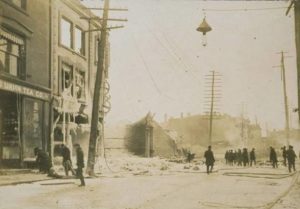
Six Cities Respond to 1902 Waterbury Fire – Who Knew?
A fire, which swept through Waterbury on a stormy February evening in 1902, would become the worst in its recorded history up to that point.
Read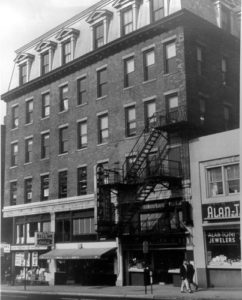
First Commercial Telephone Exchange – Today in History: January 28
On January 28, 1878, the Boardman Building became the site of the world’s first commercial telephone exchange, the District Telephone Company of New Haven.
Read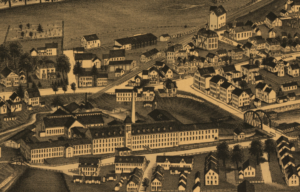
The Industrial Revolution Comes to Jewett City
The site of earlier mills, Jewett City seemed well-suited to the Tibbets’ textile enterprise: the Jewett City Cotton Manufacturing Company.
Read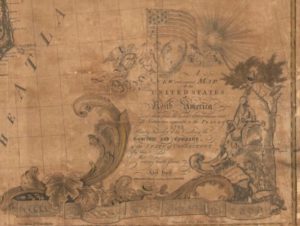
An Uncommonly Ingenious Mechanic: Abel Buell of Connecticut
This Yankee jack-of-all-trades, Abel Buell, created the first map of the new United States to be printed and published in America.
Read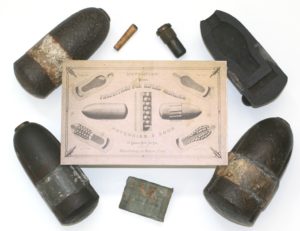
Connecticut Arms the Union
By the Civil War’s end, Connecticut had supplied 43% of the total of all rifle muskets, breech loading rifles and carbines, and revolvers bought by the War Department.
Read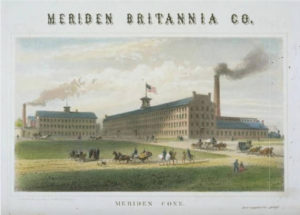
Meriden’s Silver Lining
Despite large numbers of local industries going out of business by the start of the Civil War, Horace and Dennis Wilcox, helped establish a lucrative silver industry in Meriden.
Read
Windsor Tobacco: Made in the Shade
By the mid-19th century, the “Tobacco Valley,” Springfield, Massachusetts to Hartford, Connecticut had become a center for cash-crop production.
Read
Noble Jerome’s Clock Patent Model
Noble Jerome submitted this clock patent model to the US Patent Office along with his patent application in 1839, a common requirement up until the 1880s.
Read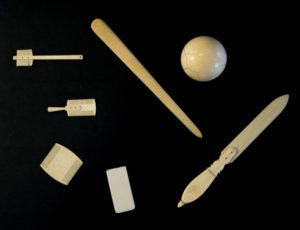
Phineas Pratt’s Machine for Making Combs – Today in History: April 12
On April 12, 1799, Phineas Pratt of Ivoryton, Connecticut, a deacon, silversmith, and inventor, received a patent for a “machine for making combs.”
Read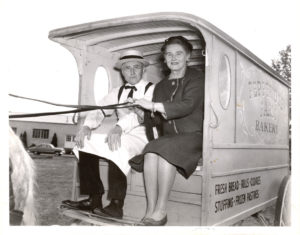
Pepperidge Farm: Healthful Bread Builds a Business
Margaret Rudkin founded the popular brand Pepperidge Farm after finding out her son’s asthma was made worse by additives found in bread.
Read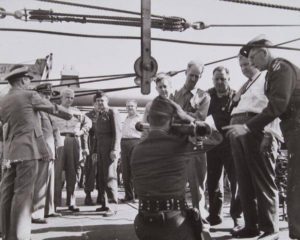
The Bazooka Changes War – Today in History: June 14
On June 14, 1942, the General Electric Company in Bridgeport finished production on the “Launcher, Rocket AT, M-1,” better known as the bazooka.
Read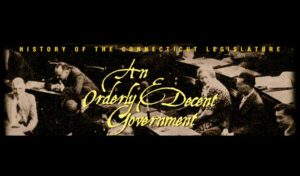
An Orderly & Decent Government: A Society in Ferment, 1819-1865
Industry, immigration, and urbanization characterized Connecticut in the 19th century.
Read
An Orderly & Decent Government: Significant Events & Developments, 1819-1865
Connecticut in the 1830s was characterized by a move from agriculture to industry, and the loss of residents to westward migration.
Read
An Orderly & Decent Government: Significant Events & Developments, 1776-1818
With its limited supply of fertile land either occupied or exhausted, one of Connecticut’s principal exports in the post-Revolutionary years was people.
Read
An Orderly & Decent Government: Searching for the Common Good, 1866-1887
In 1873, the legislature began to look more closely at the problems of Connecticut’s workers.
Read
An Orderly & Decent Government: Significant Events & Developments, 1866-1887
After the Civil War, arms manufacturing kept Connecticut industries busy, but an economic depression in the 1870s drastically changed things.
Read
An Orderly & Decent Government: The Rise of the Factory, 1866-1887
In the years following the Civil War, Connecticut’s transformation to an urban, industrial state intensified.
Read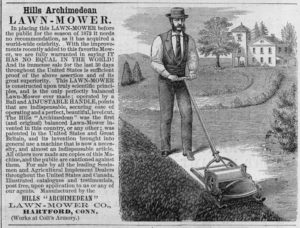
Reel Lawn Mower Patent – Today in History: January 28
On January 28, 1868, Amariah Hills of Hockanum, Connecticut, received the first US patent for a reel-type lawn mower and sold the patent in the 1870s.
Read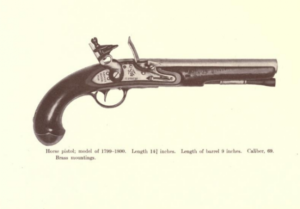
Government Orders Horse Pistols – Today in History: March 9
On March 9, 1799, the government issued its first contract for 500 horse pistols to Simeon North of Berlin at $6.50 each.
Read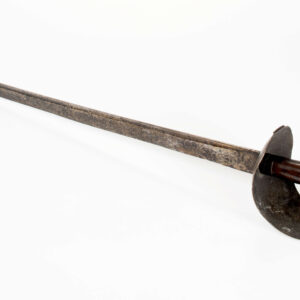
Middletown’s Nathan Starr Supplied Cutlasses for the War of 1812
On May 18, 1808, the Navy Agent Joseph Hull of New London negotiated a contract with Nathan Starr of Middletown for 2,000 cutlasses.
Read
Understanding the Environmental Effects of Industry by Examining the Starr Mill
The development of resources both in and around the Coginchaug River in Middletown were representative of prevailing attitudes about industrial expansion and environmental protection.
Read
The Hartford Courant: The Oldest US Newspaper in Continuous Publication
On October 29, 1764, New Haven printer Thomas Green began publishing The Hartford Courant (then known as The Connecticut Courant) in Hartford, Connecticut.
Read
Ivory Cutting: The Rise and Decline of a Connecticut Industry
At one time, manufacturing facilities in the town of Deep River and village of Ivoryton in Essex processed up to 90 percent of the ivory imported into the US.
Read
100 Years of Workers’ Compensation
Early attempts to enact industrial accident protections for workers were ruled unconstitutional by US courts, but a New York tragedy paved the way to successful legislation in Connecticut and elsewhere.
Read
Charles Goodyear and the Vulcanization of Rubber
Obsessive dedication transformed rubber into a viable commercial material and made the town of Naugatuck one of its leading manufacturing sites in the 1800s.
Read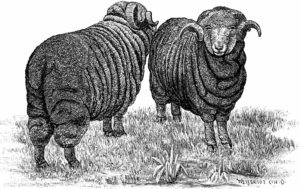
Textile Mills in Oxford Dominated Early Industry
Domestic wool production is one of the oldest industries in the United States. The first mill in Connecticut arrived in Hartford in 1788.
Read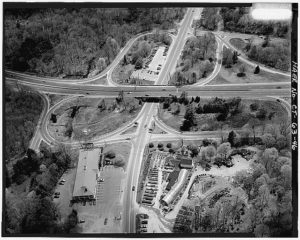
Overland Travel in Connecticut, from Footpaths to Interstates
By overcoming the limitation of distance, transportation makes possible the many economic and social interactions that allow a community, a people, an entire culture, to thrive
Read
Raise a Glass to Winemaking in Connecticut
The Colony’s first settlers produced wine and spirits, but it would not be until the 1970s that Connecticut could grow and sell its harvest.
Read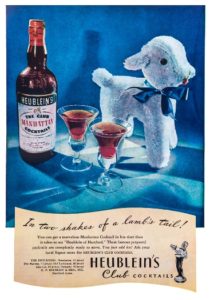
Just Pour Over Ice – Who Knew?
The Heublein Restaurant served its thirsty customers pre-mixed cocktails that became so wildly popular they had to build a distillery just to meet demand.
Read
Hidden Nearby: The Bantam Lake Ice House
Bantam Lake served a vital function as a supplier of ice that local residents used to preserve food when temperatures began to rise.
Read
A Bird’s-eye View of Moosup
This depiction of a Quinebaug Valley town and its satellite communities—Uniondale and Almyville—records an idealized view of the 19th-century textile boom.
Read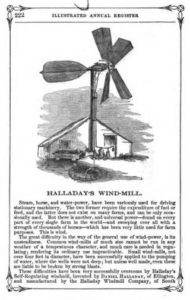
Halladay’s Revolutionary Windmill – Today in History: August 29
On August 29, 1854, Daniel Halladay a machinist, inventor, and businessman patented the first commercially viable windmill—Halladay’s Self-Governing Windmill.
Read
Lisbon Tunnel Completed – Today in History: August 28
The Norwich and Worcester Railroad built the first railroad tunnel in Connecticut, and one of the first in the nation, in the town of Lisbon in the 1830s.
Read
The Colt Patent Fire-Arms Manufacturing Company
Samuel Colt, the man who revolutionized firearms manufacturing in the United States, was born in Hartford, Connecticut, on July 19, 1814.
Read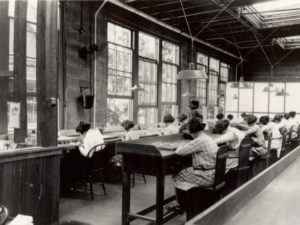
Waterbury’s Radium Girls
In the early 20th century, girls working at the Waterbury Clock Company faced death and disease from exposure to radium in the workplace.
Read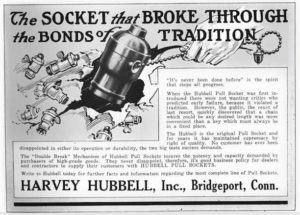
Hubbell’s Pull-Chain Electrical Light Socket – Today in History: August 11
On August 11, 1896, Bridgeport inventor and industrialist Harvey Hubbell patented a socket for incandescent lamps.
Read
A Shipping and Railroad Magnate Remembers His Connecticut Roots
From Connecticut, Charles Morgan was a shipping and railroad magnate who became one of the most esteemed New York millionaires of the 19th century.
Read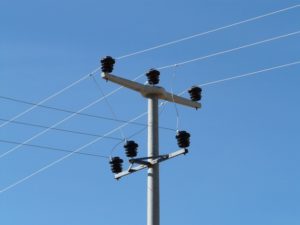
One Powerful Family in Bozrah
The operation of BL&P began strictly as a family affair with a focus on providing exemplary service to the local community.
Read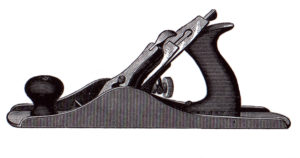
Stanley Works for New Britain
In 1843, Frederick Stanley founded a small shop in New Britain to manufacture bolts, hinges, and other hardware products for sale to local residents.
Read
When Milk Powered Watertown’s Industry
The story of the dairy industry in Watertown mirrors that of many industries in Connecticut.
Read
When Bozrah Provided Comfort to the Nation
For the better part of a century, the Bozrah mills utilized by the Palmer Brothers company served the Fitchville section of town and the surrounding community.
Read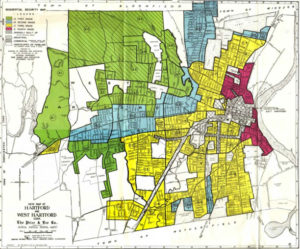
The Effects of “Redlining” on the Hartford Metropolitan Region
Historical data reveals long-term patterns of inequality that can be traced back to now-illegal practices adopted by federal and private lenders in the 1930s.
Read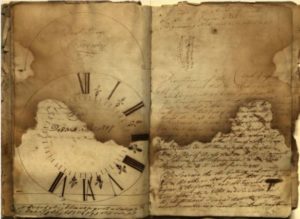
When the World Ran on Connecticut Time
The success of the clock- and watch-making industries in Connecticut came about in an era when the state was just beginning to realize its industrial potential.
Read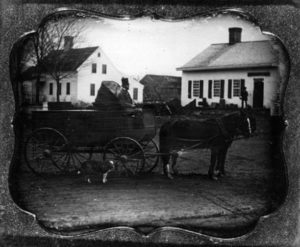
Yankee Peddlers
Yankee peddlers were a common sight in the Connecticut countryside in the mid-19th century.
Read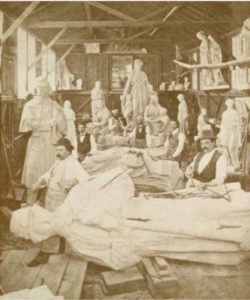
James G. Batterson, Stone Contractor
James G. Batterson was an artist, inventor, and businessman. He helped commemorate the Civil War through his proficiency with stone.
Read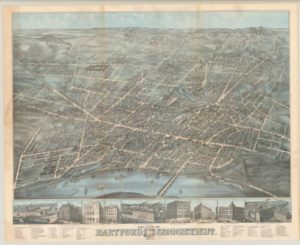
Bird’s-eye Views of Connecticut Offer Idealized Portraits of Progress
Panoramic prints of growing cities and towns became popular in the late 1800s as Connecticut transformed from an agricultural to an industrial state.
Read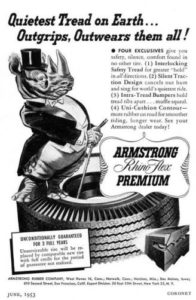
Armstrong Finds a Niche in the Tire Market
Armstrong tires, one of the most popular brands of automobile and farm equipment tires in the 20th century, has its roots in West Haven, Connecticut.
Read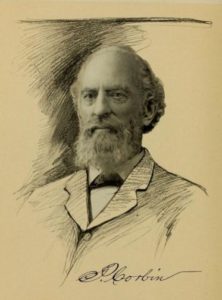
Philip Corbin: Manufacturing A Legacy for New Britain
The P&F Corbin Company manufactured builders’ hardware, including hooks, sash fasteners, picture nails, locks, and knobs, and coffin trimmings.
Read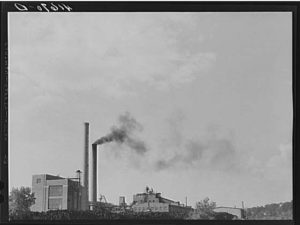
Naugatuck’s Early Chemical Industry
One of the attributes that made Naugatuck unique was that it was the home of Charles Goodyear, the inventor of vulcanized rubber.
Read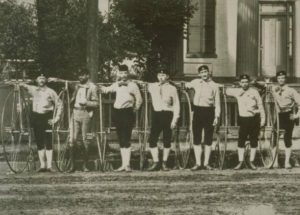
The League of American Wheelmen and Hartford’s Albert Pope Champion the Good Roads Movement
How the 19th-century cycling craze led to improved roads and paved the way for future federal highway construction.
Read
Southington Industry: From Nuts to Bolts
Buried in Southington’s past are the foundations of the bolt industry that helped build a nation from the ground up.
Read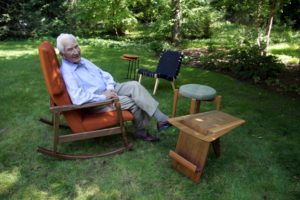
The Answer Is Risom!
How the Scandinavian design movement re-fashioned local industry in the mill town of Thompson during the 1960s and ’70s.
Read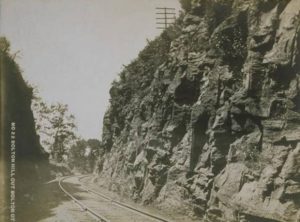
Rock-Solid Industry in 19th-Century Bolton
Driving along Route 44 in Bolton, motorists travel through a narrow passageway of rocks, caves, and woods known as the Bolton Notch.
Read
Stepping Back in Time: North Stonington Village Historic District
Listed on the National Register of Historic Places in 1983, the Stonington Village Historic District features buildings, canals, bridges, and machinery that recall life in a typical early 19th-century New England mill village.
Read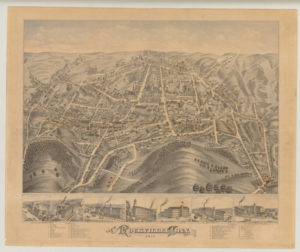
Bird’s-eye Views of Rockville Chart Textile Industry’s Growth
Two depictions, produced 18 years apart, illustrate how the textile boom transformed this borough of Vernon.
Read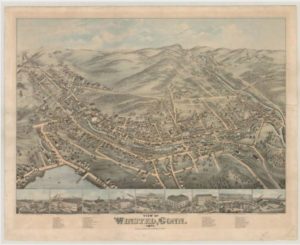
Bird’s-eye Views of Winsted
As bird’s-eye view maps declined in popularity during the early 20th century, artists incorporated technical advances in hopes of reversing the trend.
Read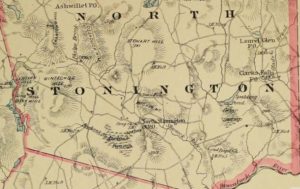
North Stonington: Shunock River and Local Ambitions Powered a 19th-century Mill Town
With water supplied by the Shunock River and Assekonk Brook, North Stonington supported mill operations and local businesses from the late 1600s to early 1900s.
Read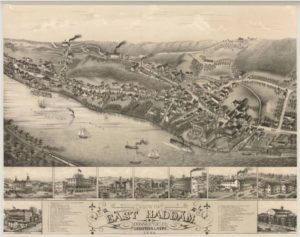
A Bird’s-eye View of East Haddam
In 1880, East Haddam was already a popular tourist destination and, despite its small size, boasted two steamboat landings to accommodate visitors.
Read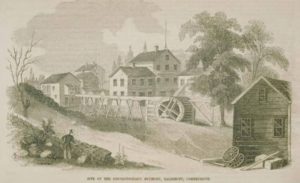
Salisbury Iron Forged Early Industry
Connecticut’s bucolic northwest corner, with its Taconic Range, Berkshire Hills, and pastoral valleys, harbored a major iron industry in the 18th and 19th centuries.
Read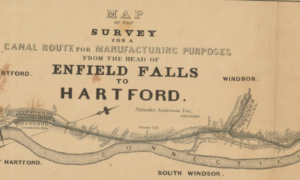
Windsor Engineers Success
In recognition of the importance of the canal and the village in fostering local economic development, the area was given the name Windsor Locks in 1854.
Read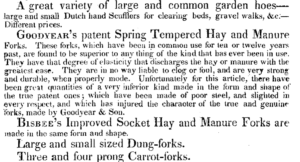
Amasa Goodyear and Son Re-Invent Naugatuck
Born in New Haven, Amasa Goodyear was an inventor, manufacturer, merchant, and farmer.
Read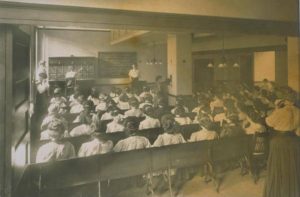
Connecticut’s First Female Telephone Operator – Today in History: March 24
On March 24, 1879, Marjorie Gray became Connecticut’s first female telephone operator.
ReadMore Articles




